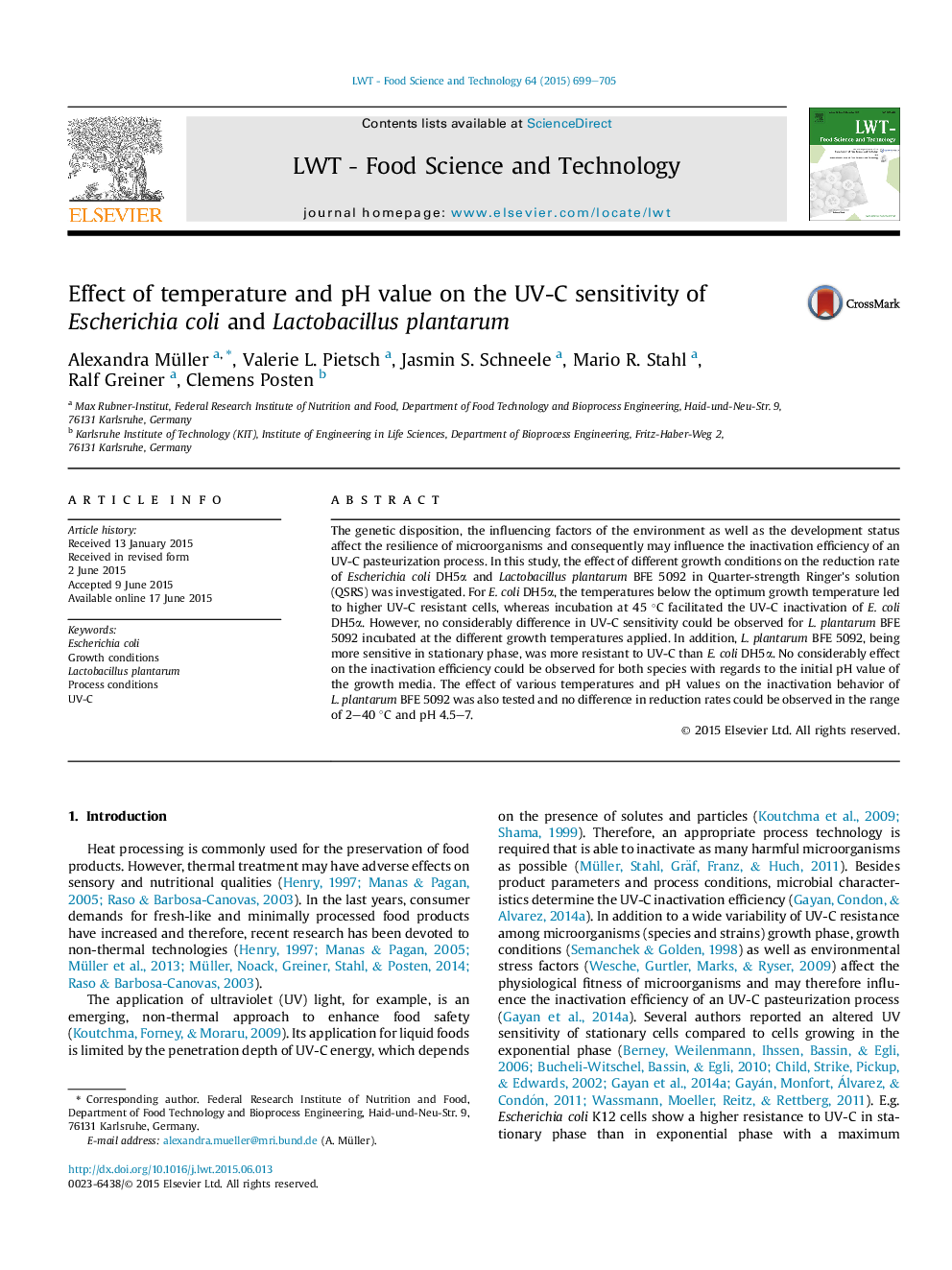| Article ID | Journal | Published Year | Pages | File Type |
|---|---|---|---|---|
| 6401749 | LWT - Food Science and Technology | 2015 | 7 Pages |
â¢Effect of different growth conditions on the UV-C sensitivity were investigated.â¢The incubation at 45 °C facilitated the subsequent UV-C inactivation of Escherichia coli DH5α.â¢Lactobacillus plantarum BFE 5092 was more resistant to UV-C in exponential phase.â¢No effect of initial pH of the growth media on the UV-C sensibility was observed.â¢The tested process conditions had no effect on the UV-C inactivation of L. plantarum.
The genetic disposition, the influencing factors of the environment as well as the development status affect the resilience of microorganisms and consequently may influence the inactivation efficiency of an UV-C pasteurization process. In this study, the effect of different growth conditions on the reduction rate of Escherichia coli DH5α and Lactobacillus plantarum BFE 5092 in Quarter-strength Ringer's solution (QSRS) was investigated. For E. coli DH5α, the temperatures below the optimum growth temperature led to higher UV-C resistant cells, whereas incubation at 45 °C facilitated the UV-C inactivation of E. coli DH5α. However, no considerably difference in UV-C sensitivity could be observed for L. plantarum BFE 5092 incubated at the different growth temperatures applied. In addition, L. plantarum BFE 5092, being more sensitive in stationary phase, was more resistant to UV-C than E. coli DH5α. No considerably effect on the inactivation efficiency could be observed for both species with regards to the initial pH value of the growth media. The effect of various temperatures and pH values on the inactivation behavior of L. plantarum BFE 5092 was also tested and no difference in reduction rates could be observed in the range of 2-40 °C and pH 4.5-7.
